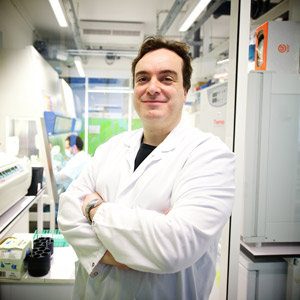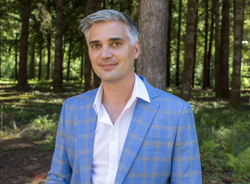New Case of Possible HIV Cure Reported
A new study that draws on the work of amfAR’s ICISTEM researchers reports a sixth person has potentially been cured of HIV via a stem cell transplant.
Another individual, known as the Geneva patient, may have been cured of HIV via a stem cell transplant. However, unlike the previous five people who have been cured with donor stem cells from individuals with the CCR5-delta32 genetic mutation, which renders cells almost impervious to HIV infection, this transplant did not involve such a special case.

The Geneva patient has been potentially cured of HIV via a transplant with “wild-type” donor cells that did not have the mutation. Wild-type cells were used because no compatible donor with the CCR5 mutation could be found.
Dr. Asier Sáez-Cirión, of the Pasteur Institute in Paris and a member of amfAR’s ICISTEM, a consortium of European researchers studying HIV-stem cell transplant cure interventions, presented his research team’s findings at the IAS (International AIDS Society) Conference on HIV Science, July 24.
Diagnosed as HIV positive in 1990 and taking antiretroviral therapy (ART) since 2005, the male patient received the transplant in 2018 to treat an aggressive form of leukemia, was treated for graft-versus-host disease with immunosuppressants, and then stopped taking ART three years later. He has now been off ART for 20 months and researchers from the Pasteur Institute, Institut Cohin, and ICISTEM cannot detect the virus in his body. Researchers say if they still cannot find replication-intact HIV after a further 12 months, then the chances he will remain HIV-free increase significantly. If successful, the strategy could greatly expand the pool of potential stem cell donors.
Ten years ago, two individuals who were treated with stem cell transplants using wild-type donor cells experienced viral rebound after several months off ART, in a Boston-based study co-funded by amfAR. At the time, researchers, including co-principal investigator Dr. Timothy Henrich, now of the amfAR Institute of HIV Cure Research at the University of California, San Francisco, called for a more thorough understanding of HIV reservoirs, the main barrier to a cure, and figuring out new ways to reach inaccessible tissue sites of viral persistence. These knowledge gaps have been increasingly closed in the decade since.

Science University
amfAR established ICISTEM in 2014, a few years after the first person, Timothy Ray Brown, was cured of HIV via stem cell transplant. Two others cured by this intervention—Adam Castillejo, the London patient, and Marc Franke, the Düsseldorf patient—are both part of amfAR’s ICISTEM cohort of people living with HIV and cancer who received stem cell transplants. While curing HIV via stem cell transplant is a high-risk and costly procedure that is not scalable for the millions of people living with HIV, the research provides a wealth of information about what strategies will be needed to end AIDS once and for all.
In fact, researchers at Oregon Health & Science University, led by amfAR-funded scientist Jonah Sacha, recently published an animal study of infection with the monkey AIDS virus, SIV, and a similar transplant not involving CCR5. As reported by amfAR, one of four animals so treated had no detectable virus several years after ART was stopped and appears to have been cured. The authors concluded that so-called “allogeneic immunity,” a graft-versus-host response that occurs after a routine stem cell transplant, has “the power to eliminate immunodeficiency virus reservoirs.” They suggest attempts to harness such immunity outside of transplantation in “novel approaches to HIV cure that can be applied more broadly across PLWH [people living with HIV].”
Share This:
